Spreading the LUV — A brief history of Detroit’s mini-trucks
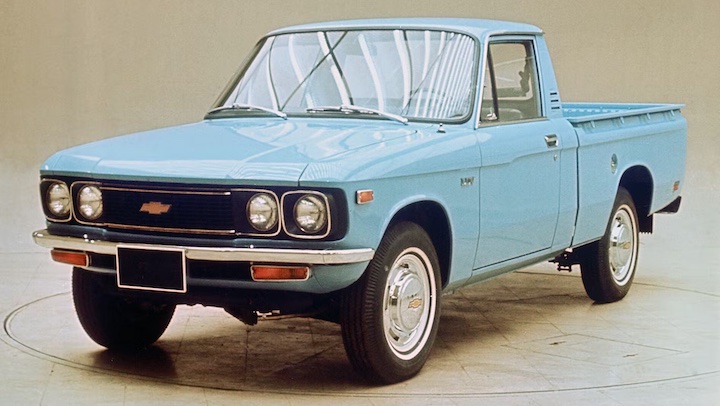
1972 Chevrolet LUV
Benjamin Hunting
Hagerty.com
(March 4, 2023) It might be hard to imagine, given the current, cutthroat state of the pickup truck segment, but there was once a time when these task-focused haulers were largely an afterthought to the bean counters in Detroit. Fifty years ago, before King Ranches and Longhorns lined their interiors with enough leather to reach from Lansing to Laredo, trucks were barebones affairs built to get the job done and sold to customers who honestly weren’t expected to use them as daily drivers.
An even more hands-off approach was applied to the burgeoning compact-truck scene, which caught the Big Three completely off-guard at the beginning of the 1970s. General Motors, Ford, and Chrysler had essentially ignored the small pickups being imported by Toyota and Datsun throughout the previous decade, blissfully ignorant of the fact that a growing cohort of buyers was willing to take a chance on a “foreign” brand if it meant an easy-to-drive truck that offered decent practicality and a low purchase price.
In fact, it’s safe to say that Datsun (now Nissan) carved out its first important foothold in America by way of its 320/520 series of mini-trucks.
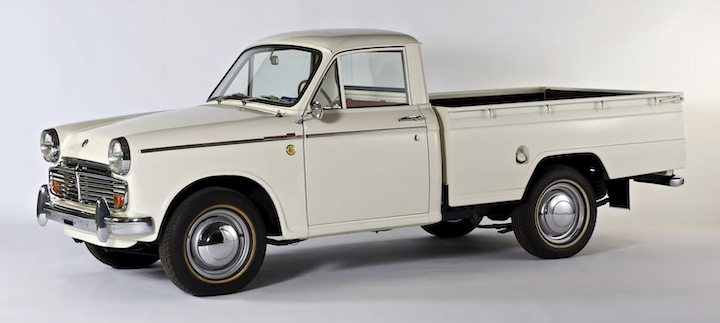
1965 Datsun L320
Scrambling to capture a demographic they hadn’t even known existed, Michigan’s best minds had to come up with a compromise, and quickly, until they could marshal the resources required to develop their own homegrown trucks. The result was a series of captive imports rebadged to battle the best that Japan had to offer … with the best that Japan had to offer. Each automaker was able to avoid the egregious 25-percent “Chicken Tax” by importing its rigs in chassis cab configuration for final assembly stateside.
Let’s take a look at the trio of mini-trucks fielded by Detroit for that awkward 10-year stretch that lasted right up until the likes of the Ranger and S10 took over the reins.
Chevrolet LUV
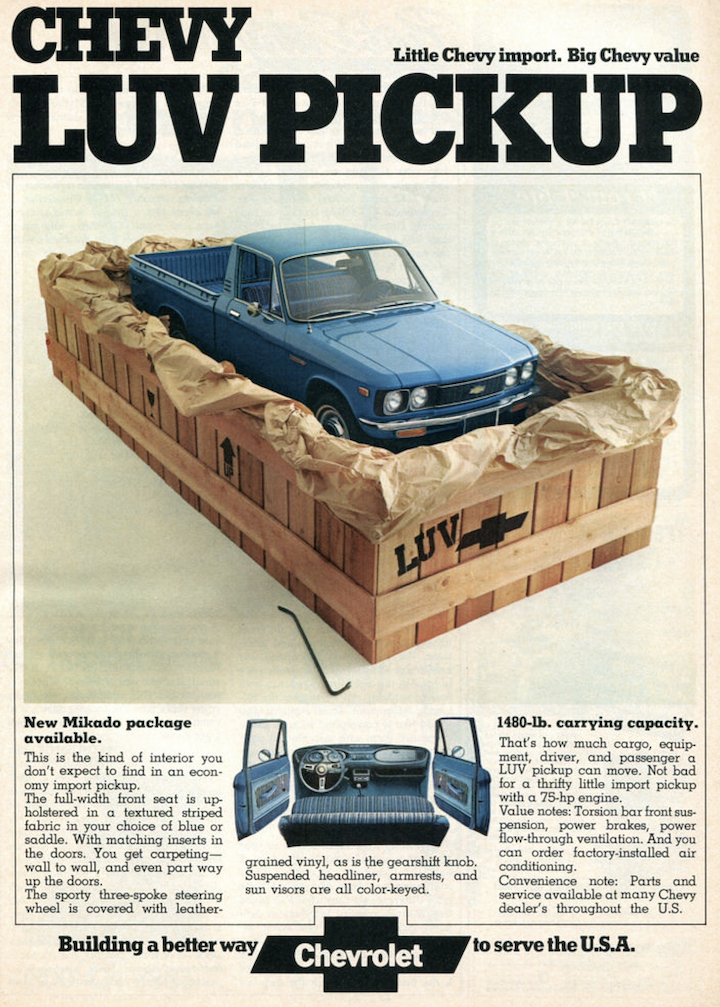
GM’s ace in the hole when it came to dealing with the nascent mini-truck madness was that it owned a sizable chunk of Isuzu. After a few terse phone calls, Chevrolet had its first compact truck ready to go, sent across the Pacific in droves to America where it would receive both the Bowtie and the unusual “LUV” badge, an acronym for Light Utility Vehicle.
The LUV was as basic as you could get when it appeared in 1972, offering a 1.8-liter, 75-horsepower, four-cylinder engine; four-speed manual gearbox; and 88 lb-ft of shrub-pulling torque. With a 102.4-inch wheelbase and 1400 pounds of cargo capacity, Isuzu’s finest was a paragon of pint-sized practicality.
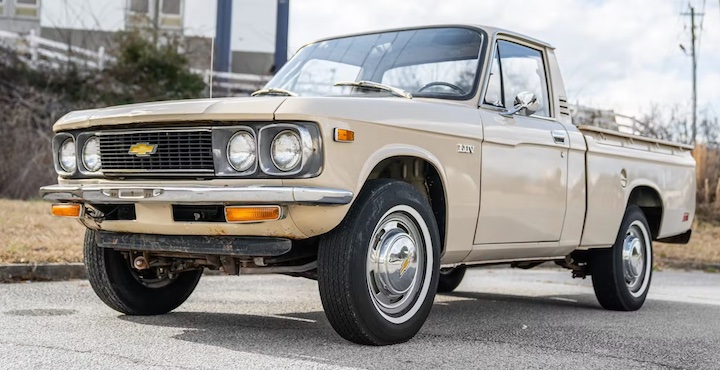
In 1976, the LUV would gain a three-speed automatic and front disc brakes. By the end of the decade it was possible to snag a chassis-cab version of the truck, choose between 6- and 7.5-foot bed lengths, add four-wheel drive, and benefit from an additional five horsepower from an upgraded four-banger. A number of styling changes would also come and go with the Chevrolet, including a switch from quad headlights to a simple pair in 1978.
Chevrolet was strategic in spreading the LUV, making the truck available first in parts of the country where buyers had already demonstrated significant interest in smaller pickups. As a result, the LUV sold in huge numbers, with sales shooting from just over 20,000 in its first year all the way to a peak of more than 100,000 in 1979.
The second-generation truck that appeared in 1981 adopted styling that resonated with fewer buyers, but it wouldn’t matter that sales were cratering because the S10 was right on the horizon — and besides, Chevy had little to complain about having moved 462,000 LUV units since the model was introduced. Not bad for a segment that no one saw coming.
Ford Courier
The Ford Courier was another example of an American institution leaning on a Japanese partner to fill a hole in its product planning. In 1972, Mazda was already selling the B1600 in the United States (and had been offering the more powerful B1800 in Canada since 1970), but it hardly minded when the Blue Oval strong-armed its way into the mini-truck mix by rebadging the B1600 as the Courier. Besides, Mazda had the Rotary Pickup waiting in the wings, so what did it matter if Ford wanted a few thousand piston-driven trucks in the meantime?
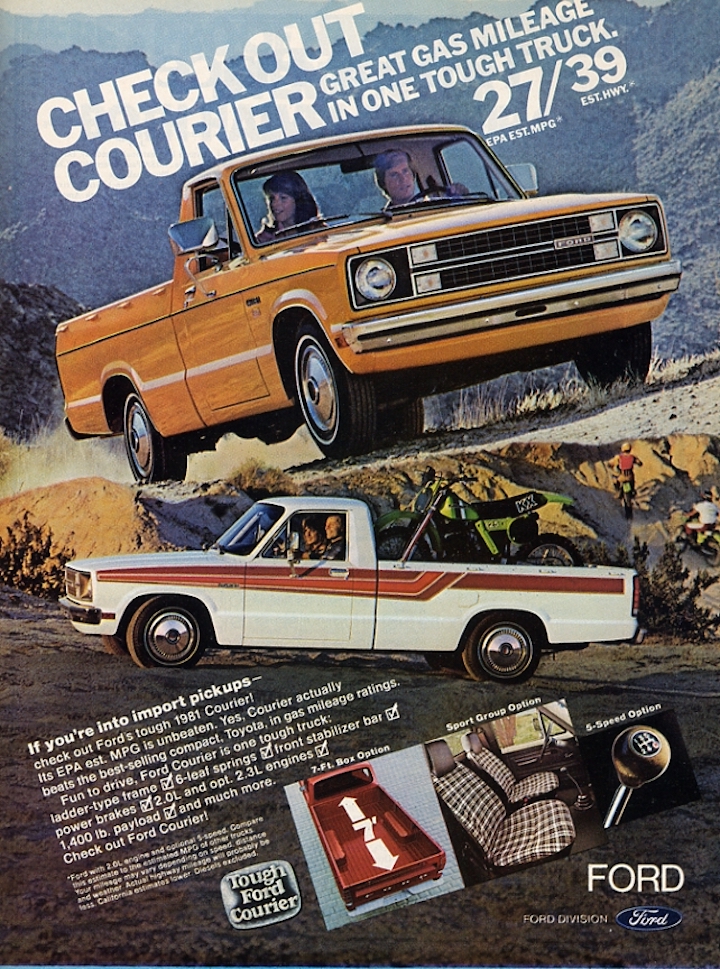
Ford took a more aggressive approach to updating the Courier than Chevy did with the LUV, at least when it came to drivetrain choices. Whereas the LUV would stick with its original powerplant throughout its entire production run, the Courier’s initial 1.8-liter four—with 74-hp and 92 lb-ft of torque—was eventually complemented by a roughly 90-hp, 2.3-liter option lifted from the Pinto (for its 1977 redesign), and then replaced entirely by a 2.0-liter mill (in ’79).
Ford also made a three-speed automatic available alongside the truck’s standard four-speed manual right from the start, adding a five-speed option in 1976. Strangely, despite the ostensibly identical Mazda delivering 2250 pounds of cargo capacity, the Courier matched the LUV with an advertised 1400-pound carry rating.
Other changes throughout the decade included the unusual decision to lengthen the cab by three inches in 1976, one year before the second-generation model debuted. Also strange was the availability of third-party four-wheel drive (most notably under the Courier Sasquatch name) in the absence of a Ford-developed system.
If you’re an EV historian, then you’ll also be intrigued by the ultra-rare Jet Industries ElectraVan 750, a battery-powered version of the Courier that offered 60 miles of range on a single charge.
The Courier would survive until 1982, when it was retired in favor of next year’s iconic Ranger.
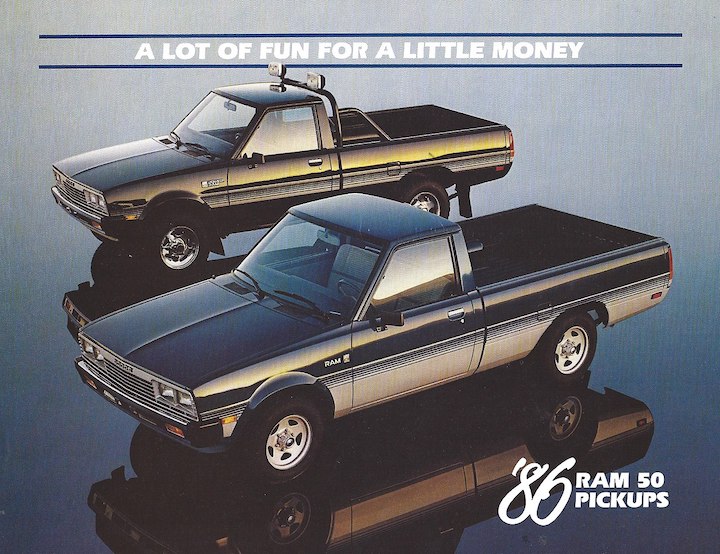
Dodge D-50 / Plymouth Arrow
Chrysler leaned on its long-standing history with Mitsubishi when it came time to tackle the surging mini-truck threat. Unlike Mazda and Isuzu, however, Mitsubishi was pickup-poor throughout most of the ’70s, leaving the Pentastar on the outside looking in at all of the action being soaked up by Ford and GM.
It wasn’t until 1979 that Dodge would import the Mitsubishi Forte, which had gone into production the year before, relabeling it the “D-50.” Deciding that the best way to make up for lost time was to double its efforts, Chrysler also tagged Plymouth into the pickup game with the Plymouth Arrow, which was identical to the Dodge.
With a wheelbase seven inches longer than that of the LUV, and featuring a choice of engines delivering between 93 (from a 2.0-liter four) and 108 (from 2.6-liter four) horsepower, the Mitsubishi twins were certainly competitive. This was especially true when considering the larger motor’s 139 lb-ft of torque, and the availability of three, four, or five forward gears. Payload remained locked at the seemingly industry-standard 1400 pounds and was delivered by a 6.5-foot bed (with another 100 pounds of bed capacity added the following year).
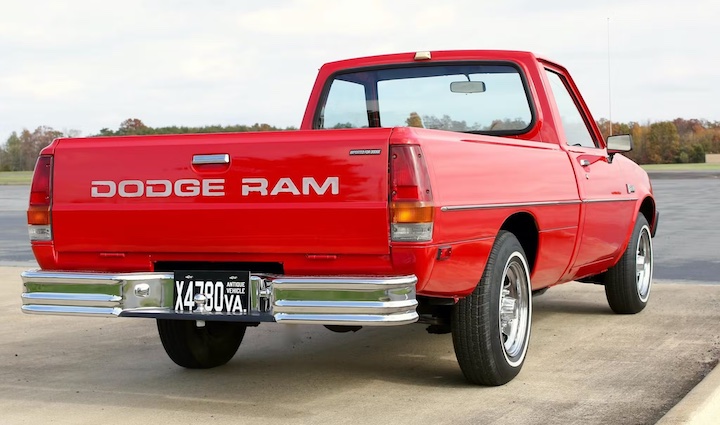
In 1981, the D-50 would be renamed the Ram 50, and while the Arrow would disappear by 1982, the Dodge version would continue on for an astonishing 13 additional years (finally leaving the American market in 1994). During that time it would gain four-wheel drive, a four-door model (in addition to extended-cab versions), and endure a brief flirtation with diesel power.
Why did the Ram 50 endure? Truth be told, Chrysler was in total chaos in the early ’80s and had no money to throw at a dedicated compact-pickup platform. While Ford fans and Chevy loyalists were enjoying the Ranger and S10 for the 1982 and ’83 model years, Mopar maniacs were instead gifted with the ultra-weird (and short-lived) Dodge Rampage and Plymouth Scamp, L-body front-wheel-drive haulers that had more in common with the Subaru Brat than they did a legitimate truck. These were followed by the unibody Jeep Comanche in the middle of the decade, which was itself joined by the mid-size, and full-frame, Dodge Dakota in 1987, creating a confusing-at-best situation at Mopar dealerships for much of the ’80s.
That confusion seems appropriate considering how long it took the Big Three to figure out there was a mini-truck market in the first place.
